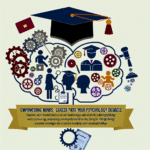
Introduction
The relationship between school and home is one of the cornerstones of student success. In an era marked by digital communication, the traditional parent-teacher relationship has evolved significantly. From Emails to Conferences: Best Practices for Engaging Parents in Education not only highlights the tools available to enhance parental involvement but also emphasizes the impact of such engagement on student outcomes.
Why is this topic important? Research shows that when parents are actively involved in their child’s education, students tend to perform better academically, demonstrate improved behavior, and exhibit more positive attitudes towards school. However, creating meaningful connections with parents remains a challenge for many educators. In this article, we will explore practical strategies and real-world applications to foster those connections effectively.
The Landscape of Parental Engagement
Understanding Parent Engagement
Parental engagement can take many forms, but it primarily revolves around two critical components: communication and participation. Effective communication is the bridge that connects educators and families, while participation reflects the involvement of parents in school activities.
Why It Matters
Engaged parents can help to:
- Improve student performance
- Enhance the school community
- Foster positive behaviors in children
A 2021 study found that schools with high parent engagement saw a remarkable 20% increase in student achievement scores. This showcases the need for educators to prioritize engagement strategies.
Intersection of Technology and Engagement
The rise of technology has transformed how schools communicate with parents. The shift from traditional methods of engagement—such as newsletters and phone calls—to digital platforms—like emails, social media, and video calls—has created both opportunities and challenges.
Table 1: Communication Modes and Their Effectiveness
| Mode | Effectiveness | Preferred by Parents | Drawbacks |
|---|---|---|---|
| Emails | High | 75% | Can be overlooked |
| Phone Calls | Medium | 50% | Time-consuming for teachers |
| Conferences | Very High | 85% | Limited interactions |
| Social Media | Medium | 60% | Can create misinformation |
This table illustrates that while email and social media have their place, face-to-face interactions—such as conferences—remain paramount for building trust and rapport.
Emails: The First Line of Communication
Crafting Effective Emails
When considering From Emails to Conferences: Best Practices for Engaging Parents in Education, it begins with the humble email. Here are some tips for crafting emails that resonate:
Be Clear and Concise: Parents appreciate brevity. Focus on key points and actionable items.
Example: "We have a school event on Friday, and we would love to see you there. Please RSVP."
Use Personalization: Personalize emails with parents’ names and mentions of their child to foster connection.
- Share Positive Updates: Highlight accomplishments and progress. For instance, “Your child did exceptionally well on the math quiz last week!”
Case Study: The Power of Weekly Updates
At Lincoln High School, a dedicated outreach coordinator sends weekly emails highlighting student achievements and upcoming events. As a result, parental participation in events increased by 30% over a single term. This case illustrates how consistent and positive communication can lead to greater engagement.
Conferences: Building Strong Foundations
Preparing for Successful Conferences
Conferences are a jewel in the crown of parental engagement. They allow for face-to-face interaction and deeper conversations around a child’s educational journey. Here are best practices for hosting effective conferences:
Set the Stage: Create an inviting environment. Refreshments can go a long way in making parents feel welcome.
Come Prepared: Have student portfolios or data ready to showcase the child’s progress.
- Listen Actively: Engaging parents means listening to their concerns as much as sharing your insights.
Case Study: Collaborative Partnership at Grove Elementary
At Grove Elementary, the principal introduced "Goal-Setting Conferences" where parents and teachers collaboratively set educational goals for students. The school reported a 25% increase in parental involvement and a notable improvement in student performance metrics. Engaging parents in the goal-setting process not only motivated students but also created a strong partnership between home and school.
Creating an Engaging Environment
Inviting Parents to Participate
From Emails to Conferences: Best Practices for Engaging Parents in Education should also consider the role of invitation. Make parents feel like they are a vital part of the school’s community:
Flexible Scheduling: Offer multiple time slots for conferences to accommodate working parents.
- Variety of Engagement Opportunities: Organize workshops, volunteer days, and family nights to cater to varying interests.
Table 2: Engaging Activities and Their Impact
| Activity | Engagement Level | Student Impact |
|---|---|---|
| Workshops | High | 20% improvement in participation |
| Volunteer Days | Medium | Enhanced community ties |
| Family Nights | High | Increased parental involvement |
This table underscores how diverse engagement activities can foster a collaborative environment conducive to student success.
Assessing Engagement Efforts
Measuring Success
To optimize From Emails to Conferences: Best Practices for Engaging Parents in Education, it’s critical to continuously assess the effectiveness of communication and engagement strategies:
Surveys: Conduct post-conference surveys to gauge parent satisfaction and areas for improvement.
- Attendance Tracking: Monitor attendance rates at events and conferences to identify trends.
Case Study: Transformative Surveys at Ridgeview High
Ridgeview High began rolling out anonymous surveys post-conferences to solicit feedback from parents. The school used this data to adjust their strategies based on real-time feedback. Participation in future events soared by 40%, demonstrating the value of listening to parents.
Conclusion
Engaging parents in education is a multifaceted endeavor that requires time, effort, and the adoption of various best practices. From Emails to Conferences: Best Practices for Engaging Parents in Education highlights the importance of consistent communication, personalized strategies, and a welcoming environment. When schools act as partners with parents, students reap the benefits in classrooms and beyond.
Moving forward, schools must adapt and continuously innovate their engagement practices. Embrace technology but don’t neglect the more personal interactions that resonate deeply with families.
In conclusion, let’s foster deeper connections, celebrate achievements together, and work collectively toward the ultimate goal: the success of our students.
FAQs
1. How can I improve email communication with parents?
- Focus on clarity, use personalization, and highlight positives based on individual student achievements.
2. What are effective ways to encourage parent attendance at conferences?
- Offer flexible scheduling, provide multiple reminders, and create a welcoming atmosphere with refreshments.
3. What should I do if a parent is unresponsive to emails?
- Consider a different method of communication, such as a phone call or a face-to-face meeting.
4. How often should schools engage with parents?
- Aim for consistent communication—weekly updates or newsletters can be beneficial alongside major events throughout the year.
5. Can technology replace face-to-face interactions?
- While technology can enhance communication, face-to-face interactions foster deeper personal connections and understanding.
By adopting these practices, educators can harness the collective power of home and school to ensure that every child has the opportunity to succeed. Embrace these strategies today and witness the transformative effect of parental engagement in education!

















